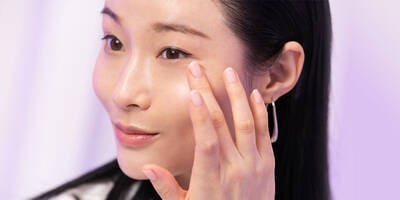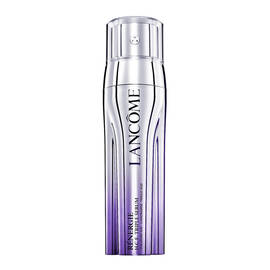Ferulic Acid: What is Ferulic Acid and How to Use It
Article Published: 28 September 2022
Discover the skin benefits of antioxidant Ferulic Acid, visibly brightens and fights against free radicals and pollution.

A natural antioxidant – Ferulic Acid is a plant derived ingredient which you can find in many skincare products isn’t just all talk, in fact Ferulic acid has scientifically proven benefits for the skin’s appearance.1 That being said you may be wondering – is this really another ingredient I should incorporate into my skincare routine? We think Ferulic Acid for skin is definitely worth investigating as your new go-to skincare ingredient.
What Are Ferulic Acid Benefits for Skin
Ferulic Acid is an ingredient you may find in a number of different skincare products. It’s rich antioxidant properties make it a desirable skincare ingredient, but beyond simply being an antioxidant you may be wondering what are some of the benefits of Ferulic Acid for skin.
When used in skin care formulas, Ferulic Acid is often touted for its photoaging properties. Among its benefits, the ingredient has been shown to help neutralize and fight against free radicals (such as pollution or UV radiation), which often contribute to visible signs of skin aging like wrinkles and fine lines.2 A player in anti-aging products, Ferulic Acid has also been shown to help improve the look of fine lines and wrinkles.34
Additionally, Ferulic Acid has also been shown to have some brightening benefits.5
Lancôme Products with Ferulic Acid
Ferulic Acid is an ingredient we think is worth including in your skincare routine and it’s in some our formulas such as Rénergie H.C.F Triple Serum. In this serum, Ferulic Acid combines with Hyaluronic Acid and Vitamin C+Niacinamide. This serum is packaged to deliver optimal anti-aging benefits in one single formula.
Ferulic Acid as an ingredient provides powerful antioxidant benefits in this formula to help neutralize harmful free-radical damage and improve skin’s natural moisture barrier against oxidative stress that can accelerate the visible signs of skin aging.
With our unique triple-chamber packaging the Ferulic Acid is housed in its own water-free chamber, which helps to stabilize this potent yet highly sensitive ingredient and preserve its strength from degrading over time.
Ingredient Compatibility with Ferulic Acid
Ferulic Acid may not get as much hype as the famed Hyaluronic Acid or Salicylic Acid -- but it’s still an ingredient found in skincare products so you may be wondering how it plays with other ingredients.
Ferulic Acid and Hyaluronic Acid
Hyaluronic acid may be the most widely known “acid” there is in skincare products. Renowned for its hydration properties and lightweight consistency, Hyaluronic Acid is a fantastic ingredient for moisturizing the skin.6 You can find both Hyaluronic Acid and Ferulic Acid in our Rénergie H.C.F Triple Serum, which utilizes different chambers to ensure ingredient stability and the most potent effects of each ingredient.
Vitamin E, Vitamin C and Ferulic Acid
Vitamin C is known for its skin antioxidant benefits and how it can help to visibly brighten the appearance of the skin and improve skin texture7. It’s been shown in some studies that combining Ferulic Acid and Vitamin C and/or vitamin E can help to improve the stability of the ingredients. In one case it was shown that using a combination of Vitamin C, E, and ferulic acid can help provide protection against oxidative stress in skin and could help in protecting against visible photoaging.8
Niacinamide and Ferulic Acid
Niacinamide is an ingredient which has been shown to help boost hydration and moisturize the skin9. It’s also been shown to have benefits in visibly brightening the skin’s appearance10. Some studies have shown that combining ferulic acid with other actives with brightening properties like Niacinamide is possible so Niacinamide and Ferulic Acid are a combination worth exploring11. Our Rénergie H.C.F Triple Serum contains both Ferulic Acid and a combination called C+Niacinamide (aka Vitamin C and Niacinamide)
1 https://www.nature.com/articles/s41598-020-68732-6
2 https://www.ncbi.nlm.nih.gov/pmc/articles/PMC3299230/
3 https://pubmed.ncbi.nlm.nih.gov/28884442/
4 https://www.karger.com/Article/Fulltext/491755
5 https://www.karger.com/Article/Fulltext/491755
6 https://www.ncbi.nlm.nih.gov/pmc/articles/PMC3970829/
7 https://jamanetwork.com/journals/jamaotolaryngology/fullarticle/509859
8 https://pubmed.ncbi.nlm.nih.gov/16185284/
9 https://www.ncbi.nlm.nih.gov/pmc/articles/PMC2921764/
10 https://pubmed.ncbi.nlm.nih.gov/18492135/
11 https://www.karger.com/Article/Fulltext/491755#ref33


